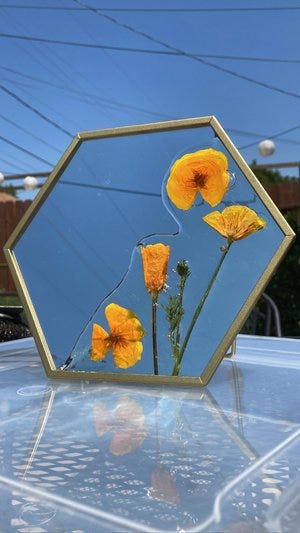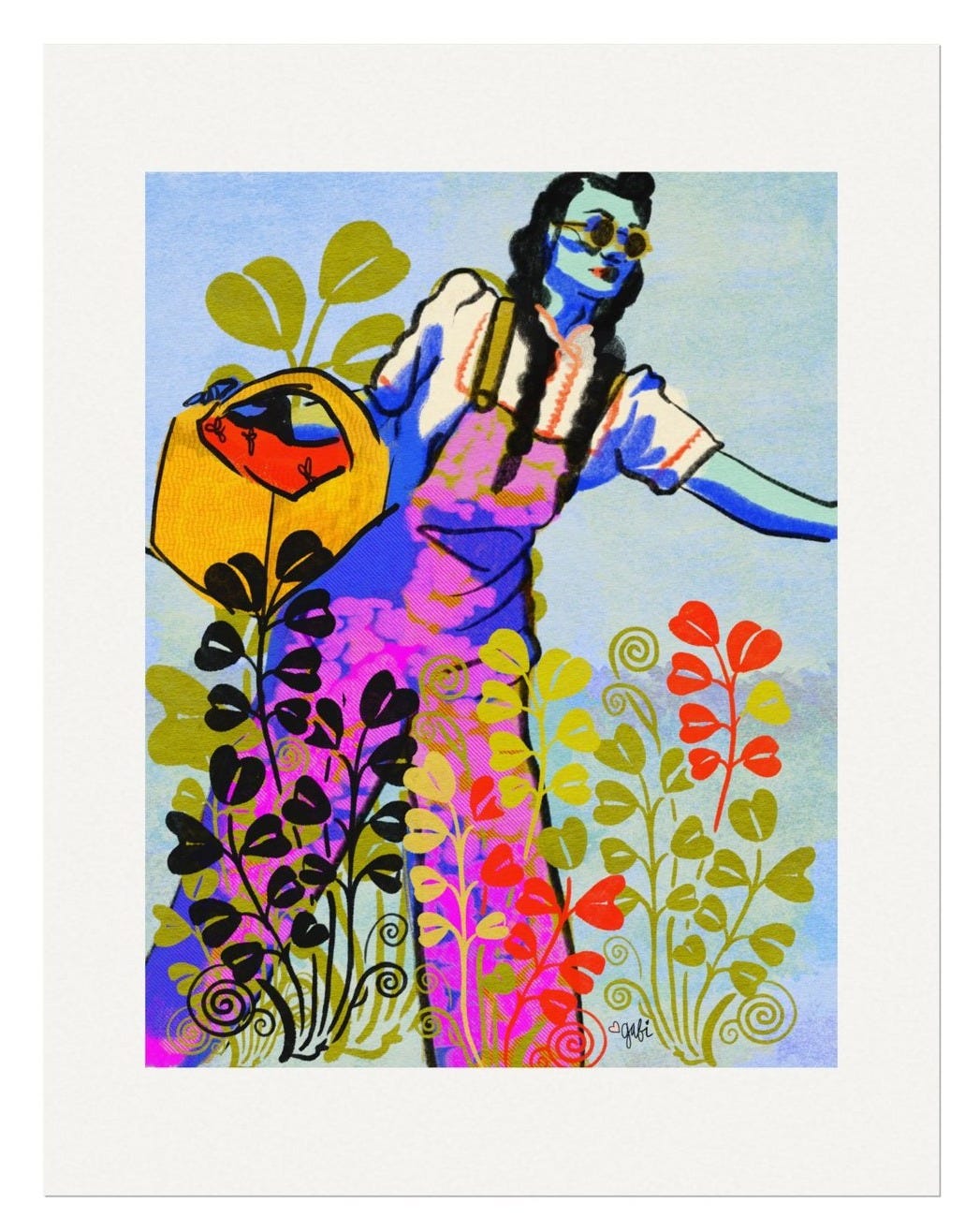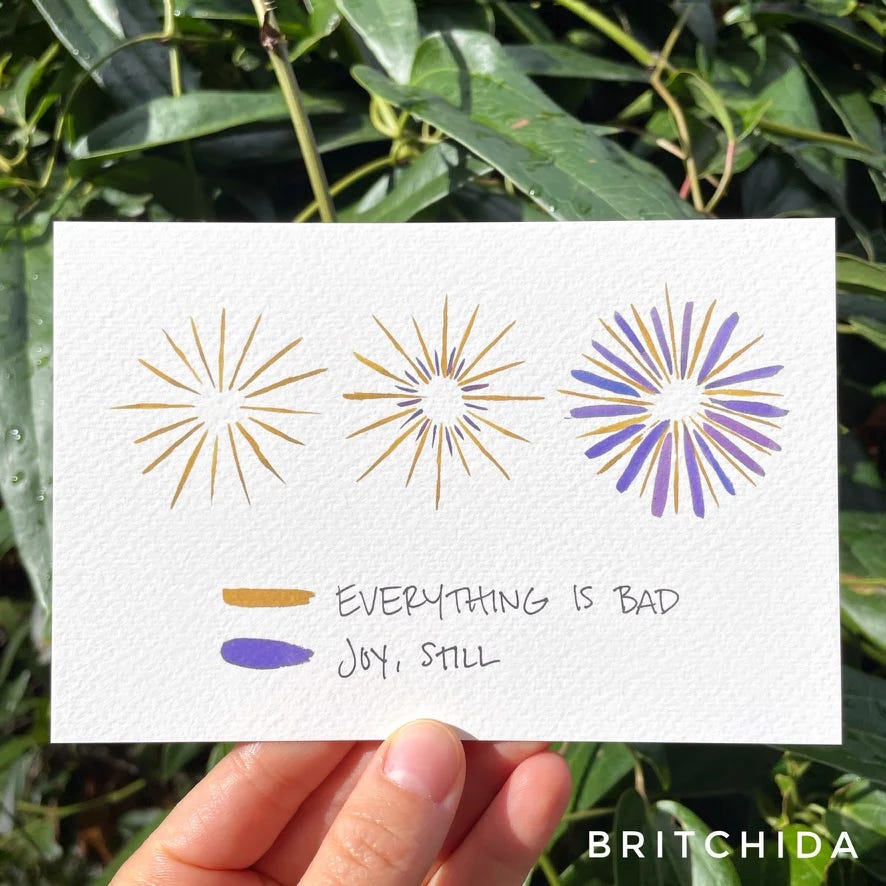An Intervention For the World Weary Who Are Terrified of What's To Come
Tuning into Spring & Summer as a Practice of Looking Forward With Open-Hearted Anticipation
As we emerge out of winter here in Massachusetts, I have the great fortune of getting to restart the weekly morning coffee ride I organize. On our first ride of the season two weeks ago, I asked folks during introductions to share something they were loving or looking forward to about Spring. By the time, all ten or so of us had gone around and shared, my mood had shifted noticeably. I felt reoriented—reminded of the wonder unfolding all around us, and of the beauty still on its way.
It was a striking contrast to how the future has felt lately. So much of what lies ahead feels uncertain and frightening. In many ways, things are getting worse, and so many of us are dreading and bracing for what’s to come. Politically. Environmentally. Socially. Maybe there are things in your personal life not directly connected to the sociopolitical climate or climate change that make the future uncertain and scary, too.
The problem with looking into the future and seeing only murky shapes of awful things to come is that it can overwhelm our ability to function in the present. Studies have shown that chronic dread activates our brain’s threat response system, causing real-time emotional and physical distress. Not only is this counterproductive in terms of preparing for the future, it’s also a really horrible way to experience day-to-day life and creates a wear and tear on our body and mind.
The Psychology and Neurobiology of Dread
A lot of us are essentially engaging in mental time travel to an apocalyptic future on a regular basis. When we do this we can experience stress responses for events that aren’t actually happening. Some researchers call this “pre-living” a trauma. In climate psychology, the term “pre-traumatic stress” has been used – people experience trauma-like anxiety symptoms (nightmares, intrusive thoughts, panic, avoidance-based coping) before any personal encounter with disaster. Of course it’s worse when people have experienced a disaster. Many survivors of natural disasters develop ruminations about the apocalyptic future that disaster may be linked to - their posttraumatic stress is compounded by pre-traumatic stress. I think this concept fits what I’m hearing from folks regarding future-oriented sociopolitical distress, too. We’re being traumatized by futures we are envisioning, and this is worse for people who have already experienced the impacts of worsening oppression and violence from our government.
As I’ve stressed before, navigating the practical and emotional challenges of future uncertainty and slow-drip erosion of rights requires planning and strategizing, critical thinking, and emotional regulation. These are all capacities that essentially go offline when our brain thinks it’s responding to an immediate threat. Getting stuck in pre-traumatic stress induced survival mode means our body-mind’s resources are redirected to threat response. We’re trapped in that “on edge” state. And then there’s literally not enough cellular energy for slower functions like meta-cognition, evidence-gathering/checking, or self-reflection and self-soothing. This repeated activation of our threat response system also releases stress hormones like cortisol. Over time, chronic exposure to these hormones contributes to the biological wear-and-tear known as allostatic load, which negatively affects sleep, immune function, and mood regulation.
Another mechanism at play is how our thinking patterns evolve when we face repeated bad news. Constant exposure to headlines about anti-trans political events, attacks on immigrants and other state-sponsored violence, climate catastrophes, or societal breakdown can lead to a form of learned helplessness – we start to feel that no matter what we do, the outcome will be awful. This mindset can foster disengagement and lead to depressive moods. Moreover, this kind of exposure shifts our cognitive biases toward gloom: we may give more weight to negative predictions than positive ones, a tendency known as negative bias or catastrophizing. For example, if ten political scientists say, “it’s still possible to avert complete collapse of democracy” but one says “we’re definitely doomed,” a person in the grip of anticipatory dread might obsess over the doom scenario (and miss the opportunities to support resistance and prevention). Confirmation bias might also lead us to seek information that confirms our fears (e.g. doomscrolling through worst-case analyses), further entrenching the dread. These cognitive patterns create a vicious cycle: the more we fear the future, the more we notice and amplify (and sometimes go searching for) negative signals, which in turn heightens our current distress.
A social aspect that cannot be ignored is the role of media and our current information environment. We are now bombarded with real-time updates of everything bad happening. This can create a sense that crisis is all there is. Social media amplifies this by often focusing on worst-case speculations and doomsaying (because outrage and fear drive engagement and literally make these corporations money).
None of this means that the fears we are experiencing aren’t valid. That’s part of the problem. We can’t thought-challenge our way out of this negative anticipation or out of being afraid. As I said at the beginning, in many ways, things are getting worse. It’s not that our anxiety isn’t founded - it’s that we’re getting trapped in anxiety responses that aren’t helpful. The problem is that our fears are crowding out real opportunities to notice positive things and experience hopeful anticipation.
Retraining the Brain & Creating Room for Hopeful Anticipation
So we come back to Spring. Or Summer, for many of you reading this who have been in Spring for months.
While our fears aren’t unfounded, the way they monopolize our attention is. Which is to say, doom is not all there is - neither in the present nor the future. And attuning to the non-doom in our presents and futures is how we can shift our brains out of unhelpful survival mode. I think some folks believe that if we have to use effort to notice good things or cultivate hope, this means we’re being inauthentic. I understand where this perspective comes from, but frankly it’s wrong. As I mentioned above, our brains are biased toward negative information and toward information that confirms our beliefs - especially when we’re stressed, so if we don’t engage with intention, we are getting skewed information.
Unlike a lot of psychological work, I think this intentional attunement is actually quite a simple task. And one with huge benefit. We just need a little guidance. So I’m going to walk us through a brief experiment with a little intervention:
First, open your news app or call to mind a negative action the current administration is taking that you’ve recently experienced or read about.
[Don’t keep reading - really stop and think about this, as unpleasant as it is.]
Now pay attention to what emotions you are feeling, to what is happening in your body. What physical sensations are you experiencing? What’s your face doing? Where is your mind going? What thoughts and images are you having?
Okay.
Now, take a moment to think of or write down or say aloud at least one thing you’ve enjoyed or are enjoying about Spring and at least one thing you’re looking forward to about Summer. (If you can get a list of three for each, that would be great). At the end, I’ll share what I remember from my bike group’s Spring anticipations and then I’ll write out some Summer anticipations I have.
Really stop and think of these things.
Envision them.
Now what is happening in your body? What is your face doing? Pay attention to your emotions. What are you feeling? Where is your mind going? What thoughts and images are you having?
Okay.
The fact that the brain doesn’t process time the way we conceptualize it - that past, present, and future collapse onto each other - is why imagining future trauma elicits a stress response in the present. But we can take advantage of this function of our brain and experience benefits in the here-and-now of really envisioning the experiences we are looking forward to.
Here’s what the folks on the group ride came up with for things to look forward to about Spring back in mid April:
Sleeping with the windows open
Noticing what is returning in our gardens
55 degrees feeling warm and welcome
Eating lunch outdoors
The frogs making their evening noises at nearby bodies of water
Migratory birds returning
More physical activity
All the blossoms and blooms
Long evenings of daylight
And here’s what I came up with just now for my own anticipations about summer:
Warm but not hot early mornings
Spotting herons when I bike by marshlands and ponds
Swimming
The way sunlight shines through fully leafed trees
The comfort of shade and breeze on a hot day
Summer produce from the farms - especially tomato sandwich season
Pollinators like hummingbirds and butterflies
Watching Monarch caterpillars munch on our milkweed plants
Chrysalises
Kids screaming with glee as they run around the neighborhood
I focused largely on experiences related to nature. It’s okay if your anticipations were social or about events or entertainment or travel or anything else. But see if any of the nature things I listed resonate with you or if you can generate your own, as well. As Dr. Lizabeth Roemer recently wrote in her Earth Day blog post, there’s immense benefit in tuning into and connecting with nature. So this intervention can be a nice opportunity to do that, as well.
There’s one more piece of this intervention. Look at your list or think about what you came up with. What’s one thing you can do this weekend or this week to help you prepare for one or some of the things you’re looking forward to? Commit to doing that task - schedule a time for it right now. This makes that part of the future feel more real to our in-the-present brain, and also at the practical level ensures that we’re ready to take advantage of the future when it arrives. This also contributes to our sense of agency - chiseling away at the helplessness we may have learned/developed.
Now the real trick of this whole “intervention” is its potential impact when you transform it into a regular practice. You might have immediately noticed a shift in the tension in your body, in your mood, in what the future feels like. Or maybe you didn’t yet. But when you intentionally tune into positive anticipations and experiences over time, this practice will knock you out of the rut of feeling and believing the future is only something to dread. It will open your heart to possibilities and pleasure and joy and hope alongside the truly difficult and scary stuff. And that will help you reduce the extent to which your body and brain are engaging in chronic threat response. The effects can truly be profound.
There are other things you can do manage uncertain and scary futures without losing yourself to dread. These largely have to do with reorienting your relationship to the future so that it includes positive experiences, agency, and hope.
Cultivate awareness of good news to go alongside the very bad stuff happening. Ben Greene’s Good Queer News substack includes a weekly summary of queer resistance, victories, and advancements of LGBTQ rights and lives. KB Brookins does a weekly recap of “Trans News that Doesn’t Suck” on their instagram (this is the latest installment). There are similar efforts around climate news and our democracy as well.
Interrupt your doomscrolling habit. I wrote a whole substack post on how to use specific apps and external supports to achieve behavioral change.
Set an achievable goal that will take 1-3 months to accomplish, and break that goal into steps and timelines with little bits of dedicated time and effort throughout the months(s). This goal can be work related but is better if it’s something else. Ideas that come to mind are a small writing project, creating something like knitting a sock or building a birdhouse, increasing the distance you can comfortably bike or run, learning a song on an instrument you play, establishing a new habit, organizing your basement (this last one is me recommending this to myself).
Take actions that make a difference in your community. My father is volunteering at a name change clinic next month. Maybe you can join a group that picks up trash in your neighborhood. Or that welcomes and resources refugees. You could organize a meal train for an activist that is at risk of burnout. Donate money to a grassroots org or volunteer to table for them at an event.
Reduce isolation and get connected with others. Hyperfocusing on threat and getting stuck in threat response and pre-living traumas is harder to do when you’re with others. Dread thrives on isolation. (One note of caution is that dread also thrives on unprocessed venting/dumping of dread, so social engagements that only mirror fears for the future aren’t very helpful.) I’m working on a post or two about how to seek and build opportunities for community connection, because I know this isn’t always easy. But it’s so important and worthwhile!
Postscript
I did want to say that some of the art I featured here is by Gabi Guerra, one of my favorite artists and creators. Gabi’s work - often shared under their studio name Mala Hora - can be seen on their instagram and purchased on their website. They also recently started a substack with reflections on their process and images of their studio, sketchbooks, etc.
If you benefited from my post, check out my other writing on sociopolitical distress, and consider supporting my work by subscribing and/or upgrading to a paid subscription.
You may also want to check out my upcoming webinar geared toward mental health professionals on supporting trans and nonbinary clients with sociopolitical distress. It’s free for trans therapists and sliding scale for everyone else, with options to increase your impact by donating to trans-led/centered orgs.
I’ll leave you with my favorite image lately, a meme created by the artist Jennifer Dunn riffing off the common (these days) saying “the horrors persist, but so do I.”









